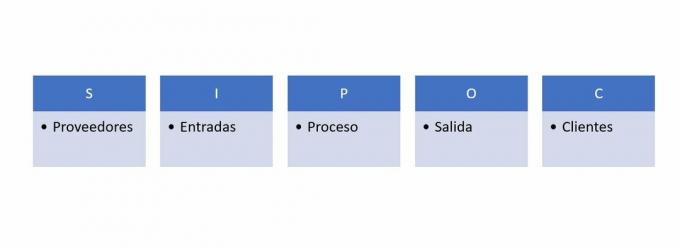A process or group of activities related and destined to generate a result, can be analyzed by means of indexes or indicators, to determine its quality, effectiveness, efficiency and productivity, in this way its good quality can be guaranteed. management.
In this sense, analysis should be understood as the study that is carried out, breaking down the process into its different parts or phases of work, to know their effectiveness and determine if they comply with the parameters expected.
Advertisements
For this, it is necessary to detail each of its components individually, as well as the relationship or interaction that occurs between them until the completion or delivery of the result:
- Inputs or inputs to the process.
- Outputs or outputs, results of the process.
- Mechanisms or each step that transforms the inputs into the outputs.
- Controls or each of the tasks that check if they comply with the standard to execute the process.
These components can be anything or anyone that helps to achieve business objectives, such as, for example:
Advertisements
- Data
- Technology
- People
- Applications
- Procedures

In each of them you may want to know the quality, time or cost that each of them has at each stage of the process.
Advertisements
That is to say that basically the analysis of a process is carried out to make improvements in it, and for this there are several ways to do it, some of these are the DAP - Process Analysis Diagram and the PDO - Process Operations Diagram.
In this article you will find:
DAP - Process Activities Diagram, What is it?
The DAP or Process Activities Diagram is a symbolic representation, where a process is graphed, already carried out or pending by perform, during its passage through each of the phases or stages through which it must pass from the beginning until its end.
Advertisements
With this diagram you will be able to identify: Amount of material, time to carry out the work, distance to be traveled, machinery and tools to be used.
Types of DAP
The DAP reflects the path and each one of the activities of a process, for which it uses previously established symbols; the DAP can be of 3 types:
Advertisements
- Operator, which describes the activities carried out by an operator or worker, is usually use verbs in the infinitive or active voice (ending in –ar, -er, -ir), to describe the type of job.
- Material, which describes what should be done with the material, usually passive voice verbs (ending in –ado, -edo, -ido) are used to describe the type of use.
- Machine, which describes how a piece of equipment or machinery should be used, generally passive verbs (ending in –ado, -edo, -ido) are used to describe the type of use.
Objectives of the DAP
Some of its objectives are:
- Identify each phase of the process.
- Determine the complete sequence of a process and its chronological order.
- Analyze the phases from a systemic point of view.
- Optimize workspaces and their arrangement.
- Optimize the use and management of equipment, machinery and tools.
- Avoid or minimize delays.
- Compare processes and procedures.
- Simplify operations, unifying or combining, but always avoiding duplication of activities.
Symbols Used in the DAP
The symbols used depend on the activity of the process, these are:

Advantages of Using the DAP
Using the DAP has the following advantages:
- They allow to understand the processes.
- Summarize the processes in an illustration.
- Identify problems and even where they start.
- Provide data for process improvement.
- Identify: phases, tasks, bottlenecks, responsibility, points for decision making.
- Excellent tool for training.
- They define and delimit the processes.
- Determine the added value that each phase of the process brings.
- It makes it easy to apply actions for the improvement and efficiency of each activity.
PDO - Process Operations Diagram, What is it?
The PDO is also a graphic representation, in this case of the production of a good or the provision of a service, for which it shows chronologically each of the operations and the inspections that must be carried out, as well as the materials that must be used, but without considering who should perform them or where they should do it.
That is, it reflects the point where material enters the system, when a control inspection should be performed, and their order, as well as the chronology in which each operation must be given, except for how the materials are handled.
Objectives of the PDO
Some of its objectives are:
- Present an image of the sequence of steps in a process.
- Analyze each phase systematically.
- Optimize the location of the premises.
- Analyze operations and control activities.
Symbols Used in the PDO
The symbols used depend on the activity of the process, these are:

Advantages of Using the PDO
Using the PDO has the following advantages:
- Identify the sequence of steps in a process.
- It allows optimizing the layout and handling of equipment and materials.


